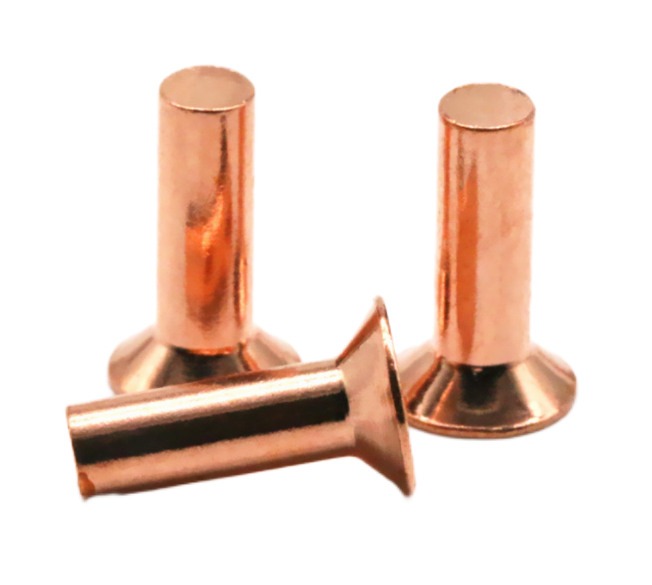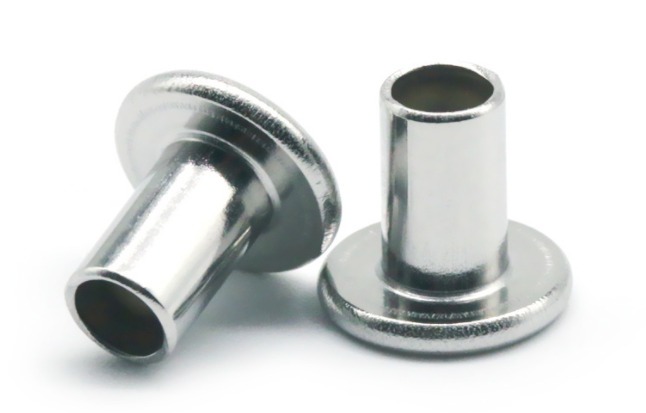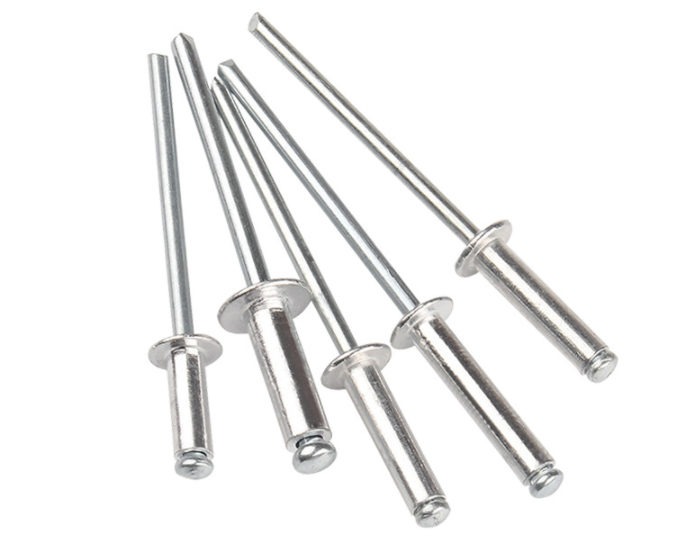What is the Working Principle of the Pop Rivet?
The pop rivet is a kind of flying rivet used for single-sided riveting, but it must be riveted with a special tool – a rivet gun (manual, electric, automatic).
This kind of rivet is especially suitable for riveting occasions where it is inconvenient to use ordinary rivets (which must be riveted from both sides), so it is widely used in buildings, automobiles, ships, aircraft, machines, electrical appliances, furniture, and other products.

Advantages of Pop Rivet Equipment
The pop rivet has a wide range of riveting, rapid installation, stable and reliable performance, and has been applied in processing and manufacturing industries all over the country.
Its main advantages in use include a wide range of single-sided construction riveting, rapid installation, large clamping force, good seismic resistance, and strong locking capacity.
Standard Installation Steps of Pop Rivets:
1. Install the rivet into the gun nozzle and insert it into the pre-drilled hole.
2. Start the tool, pull the rivet to expand and open, and fill the workpiece hole.
3. When the load reaches a predetermined value, the rivet breaks flat at the head, and the rivet rod is locked in the rivet.
What is the Working Principle of the Pop Rivet?
The working principle of the pop rivet is realized by pulling the core head with a force from inside to outside.
If you want to use pop rivets better, you must first understand the working principle in detail.
The open-type round-head pop rivets are the most widely used. The countersunk head pop rivets are suitable for riveting occasions where smooth performance is required, and the closed-type pop rivets are suitable for riveting occasions where high load and certain sealing performance are required.
Riveting of pop rivets is to use a metal cylinder or metal pipe (rivet) with a slightly smaller perforation diameter to pass through the workpieces to be riveted and knock or pressurize the surfaces of both ends of the rivet to deform and thicken the metal column (pipe) while forming rivet heads (caps) at both ends so that the workpieces cannot be detached from the rivet. When subjected to the external force that separates the workpieces, the nail rod and nail cap bear the shear force generated to prevent the workpieces from separating.
Riveting of pop rivets can be divided into cold riveting and hot riveting. Cold riveting refers to riveting at room temperature,
Hot rivets are used in places with higher link requirements, such as the riveting of steel beams of iron bridges. During hot riveting, the rivets need to be preheated, the red-hot rivets are inserted into the rivet holes, and the rivet heads are made. The stress of shrinkage during the cooling process will make the connection tighter.
Riveting generally requires a double-sided operation. The appearance of the pop rivet makes single-sided operation more simple and easy.
Conclusion
KENENG can produce standard types of rivets and customize non-standard products. If you need it, please contact us.




